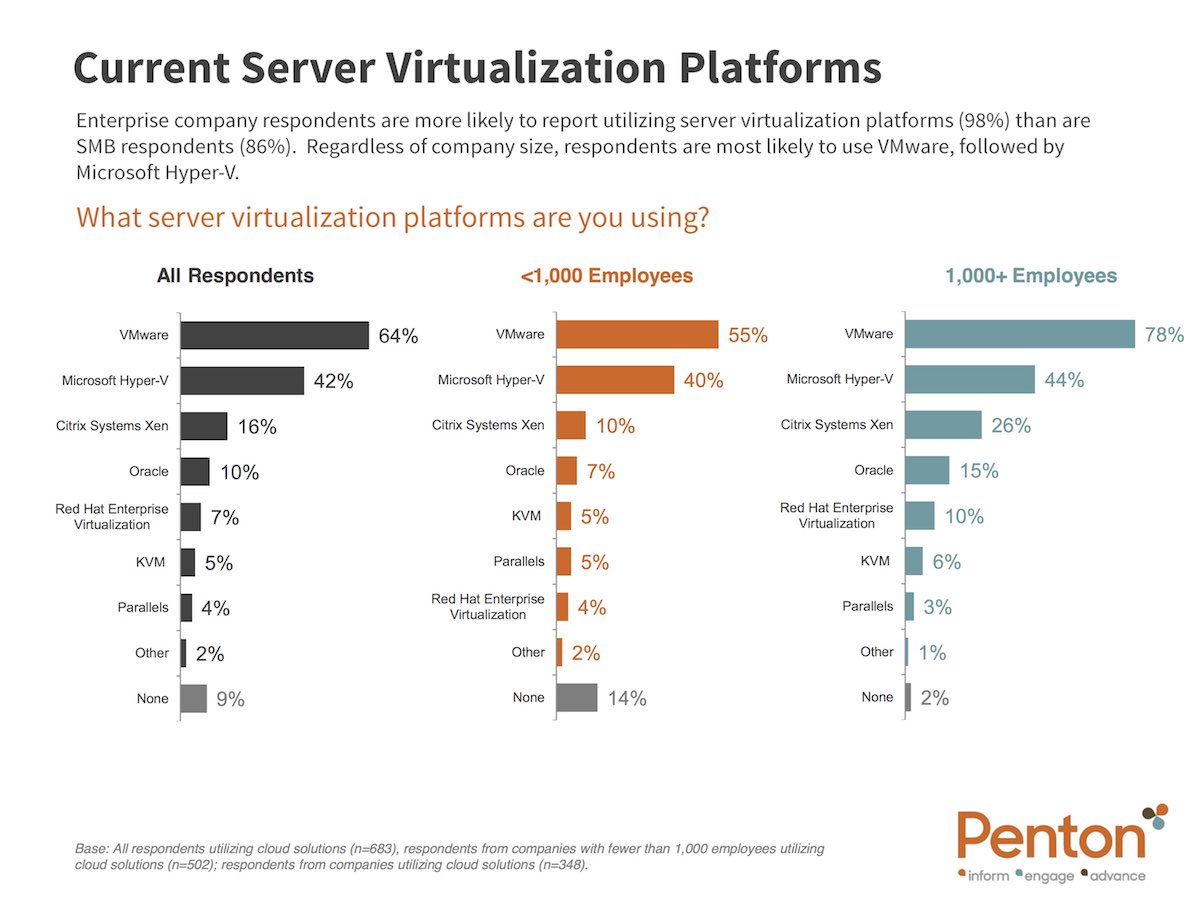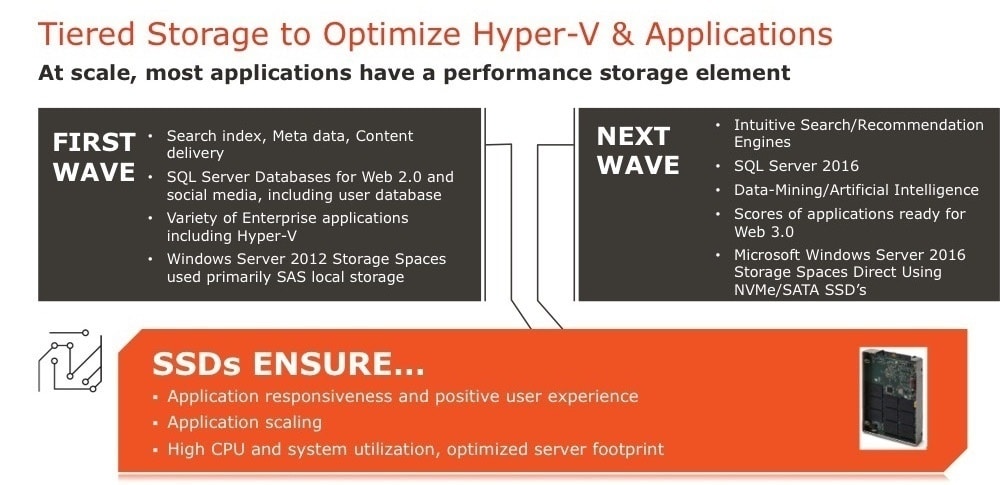Update on Storage Spaces – A Surge of Adoption
Microsoft Ignite™ is taking place next week, and it’s going to be a great (sold out) event. It’s no secret, Microsoft® has had a BIG year and came out with several innovative, industry-changing announcements. One topic I’m especially excited about – and no it’s not about rocking out at the Tabernacle – is Storage Spaces.
There’s Reasons to Be Excited About Storage Spaces
Storage Spaces has seen a sharp ramp up in deployments this year, and with the introduction of Storage Spaces Direct, Microsoft is showing how serious it is in the software-defined storage category. I recently had a chance to get insights from Howard Lo, VP of Sales and Marketing at DataON Storage, an important partner of both Microsoft and Western Digital brands, SanDisk® and HGST.
[Tweet “If anyone knows #S2D, it’s @Dataon. Lessons learned from real-world #SDS deployments”]
For those of you not familiar with the firm, DataON Storage is an industry-leading of provider of Hyper-Converged Cluster Appliances (HCCA) for Microsoft enterprise applications, software-defined storage and Azure cloud environments, built on their ClusterBlock™ Architecture. Their HCCAs are uncompromising in their single purpose of supporting Microsoft environments, and they support customers who have made the “Microsoft Choice,” helping them build the ultimate Microsoft software-defined data center.
If anyone knows Storage Spaces, it’s DataON. Here are some valuable insights I learned from Howard in our Q&A session:
To Windows Server® 2012 R2 and Beyond
Question: Storage Spaces first shipped with Windows Server (WS) 2012, then got a big update with WS 2012 R2. Where is it on the adoption curve and is it in production?
Howard: We have seen two significant trends with the release of Windows Server 2012 R2. First, is the growth of Hyper-V. According to a survey by Penton, Hyper-V has grown to over 40% of the hypervisor market since 2010. The second, is the growth of Software-Defined Storage (SDS), such as Microsoft’s Storage Spaces Direct. These two trends are strongly tied together because of the synergy between the hyper-converged, virtualization, and native SDS storage architectures. DataON now has over 500 deployments of Storage Spaces with leading companies and government agencies.

Question: What impact on productivity do you see when customers deploy Storage Spaces? How does it compare to investing in a SAN upgrade?
Howard: Storage Spaces offers many different advantages to customers. Here are the four key categories:
- Reduced SAN Hardware – Storage Spaces saves on buying extra HBAs, dedicated storage controllers, and switching hardware vs traditional SANs (FC, FCoE, or iSCSI)
- Lower Service Costs – By reducing SAN hardware you eliminate annual service and support costs for the extra hardware.
- Eliminating SAN/NAS Software Licensing Cost – Each SAN and NAS vendor charges between 15-20% of the license cost for annual software support fees, with Microsoft server software these costs are included.
- Leveraging Commodity vs. Proprietary Systems – By moving to Storage Spaces, IT managers can leverage commodity servers and storage solutions to lower ongoing operational costs.
I always think it’s best to hear from experiences of other IT manager rather than vendors. We recently did a webinar with Western Digital showing how LifeStore Bank about how they transitioned to Microsoft Hyper-V and DataON Storage’s Cluster-In-Box (CIB) storage to scale their capabilities, optimize service level agreements, and lower the cost of running virtual environments by 1.5X. So if you want to see first-hand details on how Storage Spaces helps increase productivity and reduce costs, check out this webcast with LifeStore Bank and Microsoft MVP, Aidan Finn.
Reduce Complexity, Increase Cloud Compatibility
Question: How does a Storage Spaces deployment projects compare to other storage deployments as far as project complexity, time to deploy, and the impact on business during deployment?
Howard: Our customers have seen their deployment times drop by a third versus deploying traditional SANs. The time savings are driven by the close integration of Storage Spaces with Windows Server 2012. Complexity is reduced with simplified hardware deployments vs. FC, FCoE, or iSCSI. To see some specific examples, you can read more here.
Question: Enterprises have used SANs for years due to their fault tolerance and high availability, but they require a skilled SAN administrator to manage it. What do your customers say about those aspects of Storage Spaces?
Howard: Storage Spaces on Windows Server 2012 and 2016 enable IT managers to deploy completely redundant storage cluster environments providing high availability at the system/controller level. At a data availability level, customers cite Storage Spaces’ triple mirroring and its ability to integrate off-site replication to Azure® cloud as key reasons that made them more comfortable moving to Storage Space from traditional SANs.
A Tiered Approach
Question: What do you see as the opportunity to drive customer value by working with Western Digital?
Howard: Every IT application requires the right infrastructure to run optimally. We’ve partnered for years with Western Digital due to their tiered storage capabilities that include both SSDs and HDDs which match the price, performance and capacity demands of each application in the market. It’s a comprehensive portfolio.
For I/O-intensive applications such as Microsoft SQL®, Hyper-V or Hekaton, SanDisk and HGST – Western Digital brands – provide high performance SSD-driven IOPS and enterprise-level write endurance to ensure the highest service levels. While Western Digital HDDs provide solutions for cost/capacity applications such as file/print services, Exchange, SharePoint, and data protection.

DataON teaches its partners and customers to use a combination of Western Digital’s Ultrastar® SSDs and HDDs in their deployments to improve the performance and responsiveness of their applications. In our case study with Western Digital for the Rose-Hulman Institute of Technology, about 1.5% of Rose-Hulman’s storage utilizes Western Digital’s enterprise-class SAS SSDs, and they use a simple but effective approach of echoing the same SSD ratio when configuring hot tiers for a new file share. Over time, they expect to fine tune and increase the Western Digital SSD hot tier allocation based on utilization and performance trends.

Ignite Ahead!
Question: What can we expect to see from DataON at Ignite this year?
Howard: DataON is showing the first product in its new S2D-3000 family of Hyper-Converged Cluster Appliances (HCCA), the S2D-3110. Our new S2D-3110 is a high-performance, cost effective, modular HCCA, enabling IT teams to rapidly and seamlessly deploy Microsoft’s enterprise virtualization and hybrid cloud services. Additionally, we will debut DataON’s MUST Visibility and Management Framework, which provides advanced cluster monitoring, performance metrics, system health statistics, and diagnostic analytics for Microsoft Storage Spaces Direct and Storage Replica.
A Story Worth Investigating
DataON is doing some really cool things with Microsoft’s innovation and we’re excited to be part of their solutions.
Make sure you stop by the DataON booth (#2052) to check out their product offerings and enterprise value. It’s impressive. DataON will also be speaking each day in the SanDisk in-booth theater (#1636). Stop by to hear Howard and learn more about our combined solution.
Folks, Ignite is going to be exciting. Our work with DataON, and our efforts to optimize Microsoft data center solutions is awesome. Here’s an overview of what we’ll be showcasing. Visit us to learn more about our story; a story of performance, economics, customer experience, and Microsoft optimization.
See you next week!




